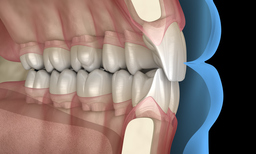Method to create a virtual dental articulator using only digital intraoral scanners
TECHNOLOGY NUMBER: 2019-064

OVERVIEW
Development of a virtual articulator which requires only intraoral scans and direct measurements- Produces virtual models of jaw movements and occlusion without face bows or facial scanners
- Use can be adopted by any dental office that already owns an intraoral scanner
BACKGROUND
Dental articulators are used to model a patient's dental occlusion and jaw movement and are important tools in diagnostics and therapy. Articulators comprise a mold of a patient's dental arches positioned, or mounted, in a way that replicates the patient's jaw movement. The production of physical articulators is time-consuming, so efforts have been put forth toward creating a means to create a virtual dental articulator through the use of computer modeling. This digital dentistry has permitted dentists to diagnose and treat patients more efficiently by creating digital counterparts for jaw movement and dentition in any patient.
However, the use of virtual articulators is limited by the time, materials and/or expertise to create them. At least two pieces of equipment are required to create a virtual articulator: an intraoral scanner to acquire dental arch information, and a facebow to acquire the orientation of a patient's jaw in 3D to facilitate mounting. Facebows and their associated digitization software are not widely available, and a need exists for alternative mounting methods in order to increase the accessibility of virtual articulators to more dental practices.
INNOVATION
University of Michigan researchers have developed a method to mount a virtual articulator that requires only intraoral scans and calculations based on fixed reference points plus ruler measurements to model patients' jaw movements. This novel approach to digital dentistry eliminates the need for a facebow or face scanner. The device provides a means by which to simulate the occlusion of the studied patient accurately and efficiently. This virtual articulator can be adopted by a large number of dental practices, given that most offices already own intraoral scanners and can easily upgrade their use to include this method.